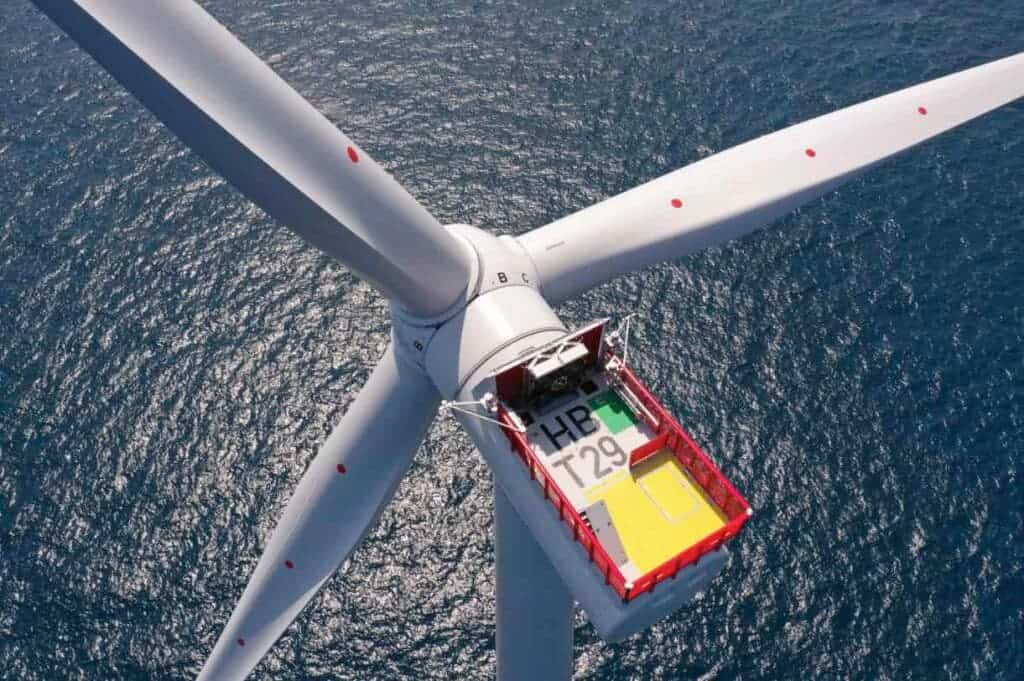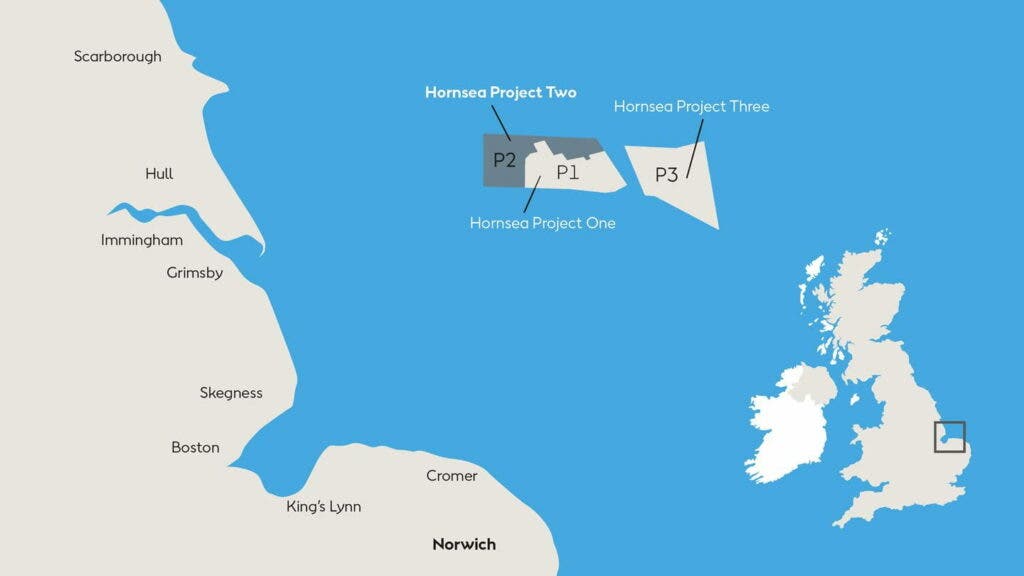Hornsea 2, the world’s largest offshore wind farm, is now fully operational off the coast of East Yorkshire in the United Kingdom. It will generate enough energy to power more than 1.3 million homes, enough for a city the size of Manchester, and it’s just one of several massive projects on the pipeline to expand offshore wind in the UK.

The new wind farm was built by the Danish energy company Ørsted and spans an offshore area of 462 squared kilometers (four times the size of Liverpool). It has 165 turbines standing 200 tall that generate 1.3GW. Ørsted estimates that a single rotation from only one blade would be enough to power a home in the UK for an entire day — and it can rotate many times a day.
The biggest windfarm before Hornsea 2 was neighboring Hornsea 1, with 1.2GW of capacity and covering an area of 407 squared kilometers. With this new energy plant, Ørsted now has 13 operational offshore wind farms in the UK, providing 6.2GW of renewable electricity. The company hopes to reach 30GW of offshore wind by 2030.
“The UK is truly a world leader in offshore wind and the completion of Hornsea 2 is a tremendous milestone for the offshore wind industry, not just in the UK but globally,” Duncan Clark of Ørsted said in a statement. “Not only will Hornsea 2 provide low cost, clean energy for millions of homes in the UK, it has also delivered thousands of jobs.”
The expansion of offshore wind
The UK is one of the leading global markets for offshore wind, with over 10GW of cumulative installed capacity across 38 wind farms. There’s another 5GW in pre-construction, and there are plans for a further 11GW. The expansion of the sector was boosted by the government’s target of 40GW of offshore wind energy by 2030.

While Hornsea 2 might seem big, it won’t likely retain its crown as the world’s largest wind farm for too long. Ørsted is already planning a bigger project in the same area, Hornsea 3, which will be capable of generating twice the power of Hornsea 2. It will meet the energy needs of over two million homes, located within a 696 km2 area.
Further north, another massive wind farm is also in the works. British utility company SSE and the Norwegian energy firm Equinor are investing $8 billion in the project Dogger Bank. The wind farm is being developed in three phases, with the first two planned to have a capacity of 2.4GW. Construction started last year and is moving fast.
Global installed offshore wind capacity is expected to reach 630GW by 2050, up from 40 GW in 2020, according to a report by McKinsey consultancy. This is largely thanks to clean energy pledges by governments, technological progress and lower costs. The expansion is set to happen across all regions, with Europe now having the largest share.









